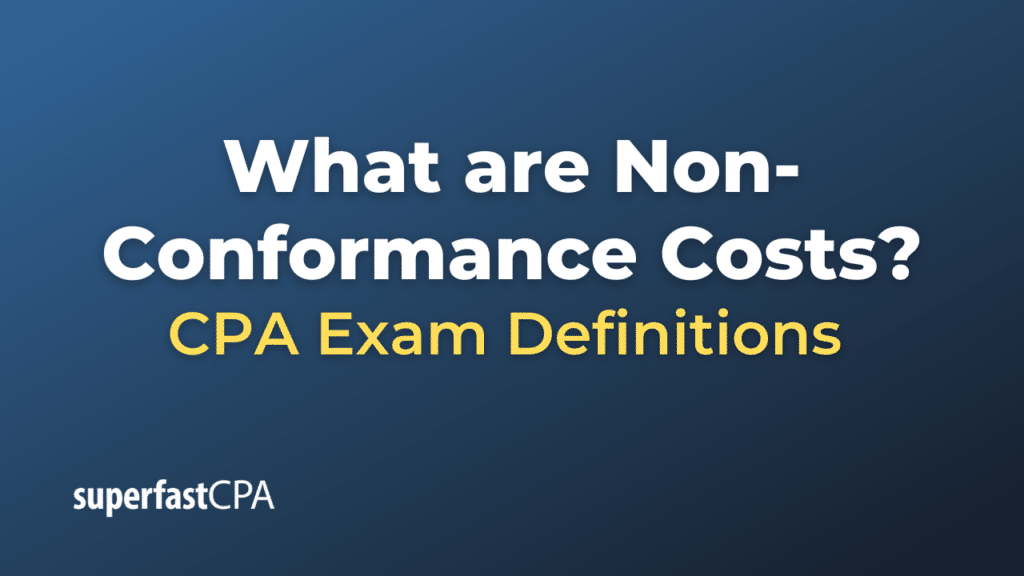Non-Conformance Costs
Non-conformance costs, also known as costs of poor quality, are expenses incurred when products or services fail to meet a company’s quality standards. These costs arise when outputs are defective and do not conform to the specified requirements. They can be a significant drag on a company’s profitability.
Non-conformance costs are typically divided into two categories:
- Internal Failure Costs: These are costs incurred before the product reaches the customer. They include costs associated with detecting defects and correcting them, such as scrap, rework, and additional raw material costs.
- External Failure Costs: These are costs incurred after the product has been shipped to the customer. They can be much higher than internal failure costs and include costs associated with product returns, warranty claims, recalls, legal actions, and even damage to the company’s reputation.
For example, if a car manufacturing company produces cars with defective brakes, the costs to recall the cars and replace the brakes would be considered external failure costs. If the defects are detected before the cars leave the factory and are fixed on-site, the costs associated with the repair would be considered internal failure costs.
Reducing non-conformance costs is a key objective of quality management systems and continuous improvement programs. By improving processes and increasing conformance to quality standards, companies can reduce waste, enhance customer satisfaction, and improve their bottom line.
Example of Non-Conformance Costs
Let’s consider an example of a furniture manufacturer:
Internal Failure Costs: The company manufactures a batch of chairs. After the quality control team inspects them, they find that 10% of the chairs have defects, such as weak joints or imperfect finishes. The company has to spend extra resources on reworking the defective chairs to meet the required standards. These rework costs, including extra labor hours, additional materials, and any wasted materials from the defective chairs, represent internal failure costs.
External Failure Costs: Assume that some defective chairs make it to customers before the faults are noticed. Now, customers are complaining and returning the chairs. The costs of these returns, including handling the returns, shipping costs, refunding customers, potentially paying compensation, and dealing with negative customer reviews and reputational damage, are all examples of external failure costs.
In both cases, these are non-conformance costs – costs that the company incurs due to failing to conform to its quality standards. By investing in better quality control and improving its manufacturing process, the company could reduce these costs and increase its profitability.













